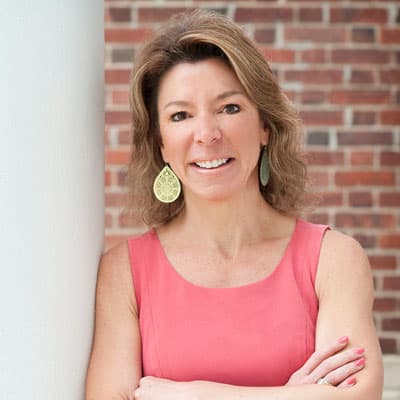
Leanne Celebrates 21st Anniversary
Senior Research Director Leanne Storer, recently marking her 21st anniversary with Zeldis Research, began her career in quantitative research. Along the way, she discovered her curiosity about people and their behavioral choices made her a natural fit for qualitative work as well. Learn more about Leanne, how clients benefit from this blended approach of qual and quant and two maxims that guide both her personal and professional life.
What was your first job at Zeldis?
I started at Zeldis part-time, while working fulltime as a Montessori teacher! I had worked for my mother’s market research company while in high school, so I knew a little bit about the industry when I joined Zeldis.
Because we were a small company, I started out wearing many hats, but initially became focused on the quantitative side — writing and fielding surveys, conducting analysis, and writing reports. One of my early passions was to bring the numbers in a report to life by designing custom templates, imbedded with color and creative imagery. But as a company, we were finding that our staff’s unique ability to ‘marry’ quant and qual was the best way of servicing our clients’ research needs, so I was soon handling the integration of both on any given project. I was able to exercise even more creative freedom on the qualitative reporting side by developing an illustration of the findings. At the time, qualitative results were more traditionally presented as key themes identified through a series of comments or verbal feedback obtained. The illustrative approach helped to identify and communicate the story behind the findings.
Our clients appreciate the ability to work with just one researcher on a study from end-to-end. It saves them from having to transfer the knowledge from the qual researcher to the quant researcher within the same firm or, even better, between different research firms! It also enables them to receive a single report on all of the findings of a topic rather than leaving them with two separate documents which they often have to combine for internal distribution and socialization.
Was that transition difficult for you personally?
At first I had some hesitations. I’m not one to crave the spotlight, but what I soon realized is that in a focus group, the spotlight isn’t on me, it’s on the respondents! I’m naturally curious by nature, so learning about people’s perspectives on issues and the reasons behind their perspectives is always of great interest to me. I realized that focus groups were just another setting for me to learn about people’s attitudes and behaviors; as the moderator, I was just posing the questions. Clients and colleagues have said that I’m “genuine” in my groups, but it’s really more that I’m genuinely curious and enjoy meeting and learning about people!
How does quantitative and qualitative research work together?
Doing qualitative work helps develop the structure for the quantitative research. The qual process starts with determining how many people we have that we can talk to. Are there enough of them to flush out the ideas? Are they the right people? Where can we find them? How can we reach them?
Conducting qual first helps us determine the scope of the questions to ask as well as the range of potential responses for each question. Conducting qual and quant together ensures we will ask all of the necessary questions and allow for all the possible answers in each quant survey we develop; leaving no stone unturned!
When we are able to report the two types of results on a particular topic it allows for a thorough understanding of the issues. We are able to report the facts as well as the reasons behind them all in one document.
What is a typical day at work like for you?
Well today, I’m heading out of town to moderate client focus groups. But more typically, I’ll be doing a number of things: writing a survey, having a kick-off call on a project, and preparing a presentation. Despite, or maybe because of, technology, we’re having more meetings with clients than ever before. WebEx and similar tools have allowed us to communicate without always meeting face-to-face.
How has the business changed since you started?
Pricing is critical. With companies doing their own in-house research, we have to be very competitive. Of course, technology has changed everything too – from the way we communicate with clients and respondents, to our methodological tools, to the timing for our projects. Clients have the expectation of immediacy.
Is there a particular philosophy or perspective that guides your work? Something that applies to both your personal and professional lives?
Yes, two things:
- Never be afraid to ask what you don’t know or understand. Early on in my career, I was afraid that asking a question was an indicator that I didn’t know something I should. I’ve since learned every question is a good question. In fact, even when I ask what seems like an obvious question, at times it brings to light something that hadn’t been considered!
- Never judge a book by its cover. It’s true in business and in life. As a market researcher, I’ve seen initial hypotheses end up being completely off base and that’s what makes this business so fascinating to me. I think it relates back to my curious nature.
How do you think Zeldis is different from other research companies?
Our clients say that one differentiator is our ‘can-do’ attitude. No project is too small; we have clients that come to us with a problem and we figure out a creative way to do it and meet the budget limitations. And of course, we pride ourselves on our responsiveness.
On a personal level, I consider the company to be my work family. The people here have my back — if I don’t have the answer, someone else will. Through brainstorming, problem solving, team projects, we all work together to come up with the ideal solution.
